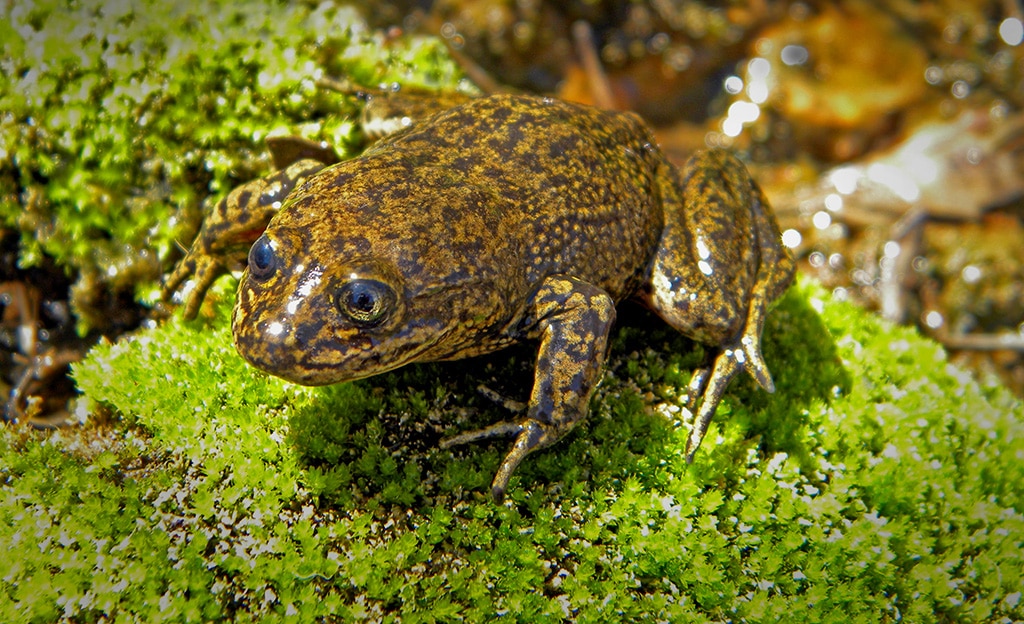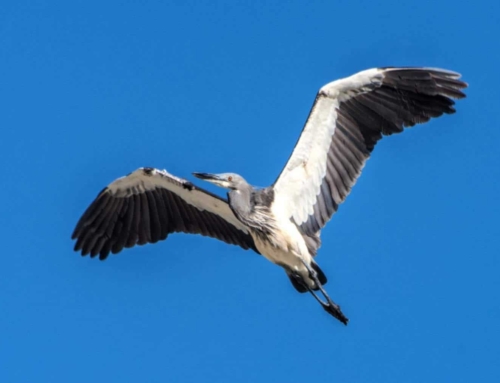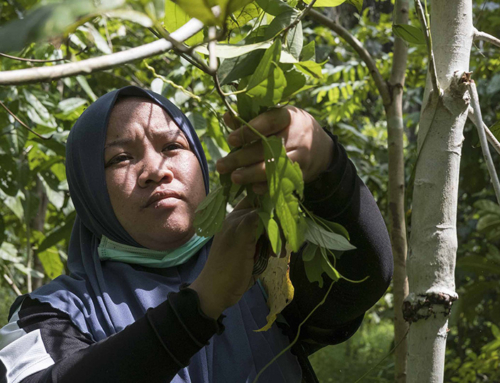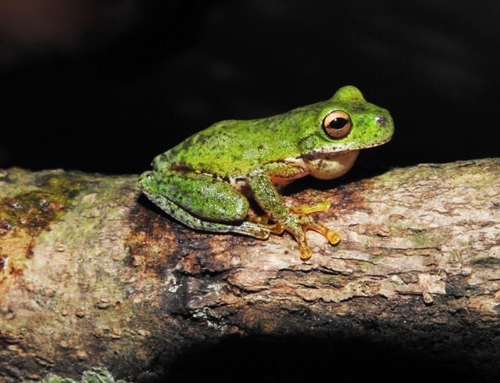Remaining optimistic about the future of the natural world is tough as a conservationist. But there is a strong argument for hope, says Helen Meredith, Executive Director of the Amphibian Survival Alliance.
Searching for hope
I recently attended a local Climate Strike with my two year old son perched on my shoulders. I took him to show our solidarity with everyone seeking action on this issue, but particularly the children protesting their right to a beautiful and hopeful future. My son plays a lot with some hand-me-down plastic animal figures. His favourites are the turtles, big cats, primates, bears, sharks and a few wide-mouthed grinning frogs.
I often find myself worrying that some of the species they represent may not be around when he is an adult; that he could someday inhabit a world where much biodiversity is represented only by these artificial traces of the majesty that once existed. At times like this I feel a quiet despair. Often quiet because of the job I do, which requires sharing optimistic messages about conservation and building a positive, engaged alliance that can rise to the challenges we face in protecting species and habitats. What use is a sad conservationist? Like a sad clown, no one wants you at their party. Plus I have worked through many narratives over the years, and the ones that involved spreading nihilistic warnings about the horror show future of this planet just depressed everyone, not least myself.
A changing tide
And then an odd thing happened. I started feeling hopeful again. At one time I looked around at the dedicated few who fight for the natural world, and thought “this isn’t enough, why don’t more people care?” – now I feel impressed by the strength and tenacity of the colleagues I have, and am always happy to meet new, passionate conservationists that join the cause every day. Hopeful narratives are essential in welcoming people to this cause from all backgrounds. I remember meeting jaded and frustrated conservationists when I wanted nothing more than to be a conservationist myself. People who told me not to bother, and to find something to do with my life that I might actually enjoy.
Contrary to their warnings, I find myself enjoying my involvement in conservation, now more than ever. Sometimes it is the slow change in public perception of environmental issues that gives me hope, sometimes the examples of striking action. Or when a friend who used to call me a monkey-loving hippy tells me about some new recycling scheme they have embraced or shames me about my carbon footprint. In the twenty years that have flown past since an ex-pat conservationist in Indonesia told me to find something else to do with my life, the world has turned and changed dramatically. And some of this change has shed a vital light on environmental causes like never before.
Fighting for amphibians

Until recently, the Admirable Red-bellied Toad was severely threatened by the construction of a hydroelectric power plant that would have wiped out its habitat, but joint efforts between academia, government, and NGOs succeeded in stopping the plans. Image: Luis Fernando Marin da Fonte
The case for pessimism in amphibian conservation is strong. Over 40% of species are threatened with extinction, and we don’t yet understand how to mitigate certain key threats, like disease and climate change. Amphibians do not top many conservation funding priority lists, and amphibians still sadly suffer from a PR issue compared to the outpouring of love for warm-blooded creatures. However, the Amphibian Survival Alliance brings together a wide range of global organisations that are diligently and creatively working on the problem, and acting to prevent extinctions and reverse declines. Yes, we could always benefit from more people caring and acting in productive ways (and it would be great if we had considerably more time to act on these issues), but the advocates that currently fight the good fight are a wonderful example of human endeavour.
Some regard the inevitable extinctions as proof positive that conservation is a futile exercise. But what we can save is worth fighting for with all our might.
A case for hope
The Amphibian Survival Alliance (ASA) is part of the Key Biodiversity Areas Partnership, which seeks to protect the last remaining habitats for highly threatened species around the world. Species like Brazil’s Admirable Red-bellied Toad (Melanophryniscus admirabilis), Peru’s Fantastic Poison Frog (Ranitomeya fantastica) and Madagascar’s Golden Mantella (Mantella aurantiaca) that might be wiped from the face of the Earth without the ongoing efforts of local conservationists and a supportive international community. We are fundraising for initiatives that seek to mitigate the impact of disease. We support new projects working on threatened species and work with future leaders of amphibian conservation to help them share their stories and establish their projects. We share stories of hope in the face of oblivion – like the work of our colleagues in Chile who are doing everything they can to save the Loa Frog (Telmatobius dankoi) from extinction after they found the last few survivors of this species clinging to life in a drying ditch.

A team of conservationists and government officials in Chile evacuated what may have been the world’s last-known 14 Loa water frogs just before their habitat dried up. Image: Claudio Soto
Conservation is hard work, and work that never ends. So long as this planet orbits the Sun and there are humans clinging to its surface to bear witness how its natural history unfolds, there will be threats and change – light and shadow. It is our job to spread a philosophy of positive action. To stand up for the rights of the silent majority that crawls, hops, swims, croaks and lurks. We cannot build something that we cannot imagine. Building a positive future for amphibians – indeed, for all life on Earth – hinges on our ability to envisage such a future, and there are many people out there right now who are already working towards this goal. I think we must celebrate their endeavours, and join them for all we are worth.
By partnering with the Amphibian Survival Alliance through our Amphibian Programme, we are supporting Helen’s vision of a positive future for amphibians.
We also believe that amplifying the news of conservation achievements is vital for the wellbeing of everyone who cares about the environment, which is why we work with Conservation Optimism to help spread the stories of conservation success.





